#Jules De Grandin
Explore tagged Tumblr posts
Text

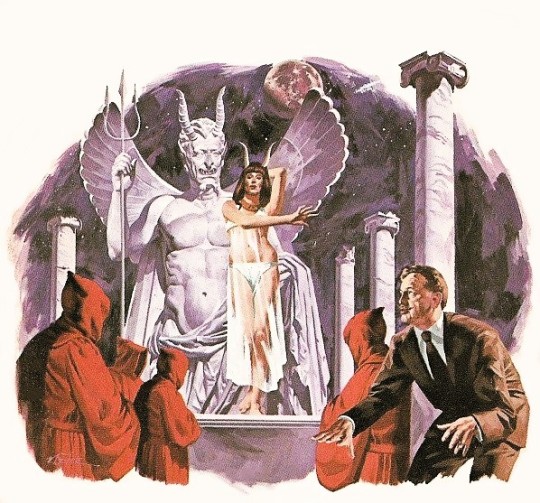
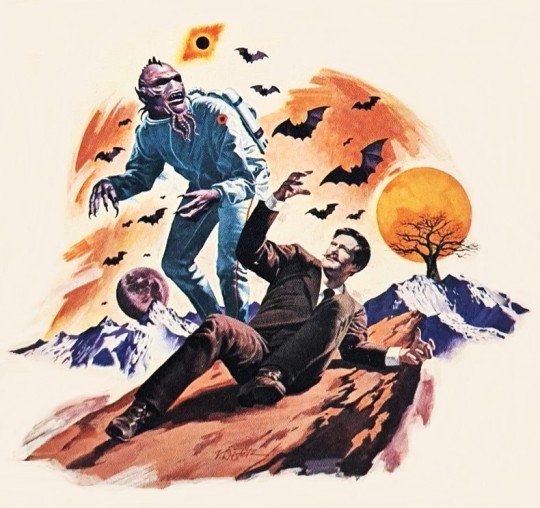
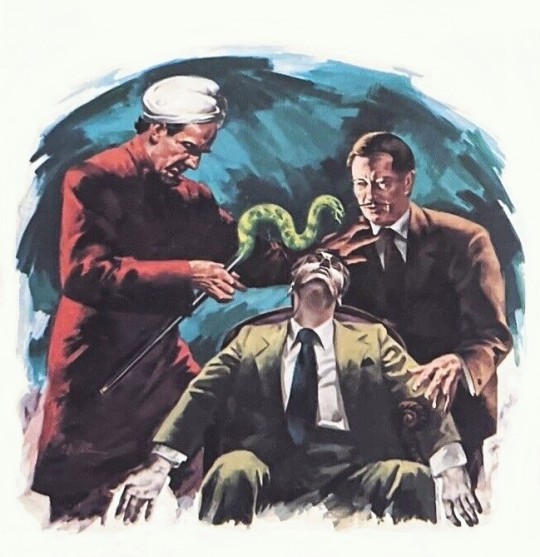


Jules de Grandin, Occult Detective - art by Vincent Di Fate (1976)
#vincent di fate#jules de grandin#seabury quinn#70s horror art#pulp art#cover art#occult detective#popular library#monsters#satanists#demons#seventies#1976
391 notes
·
View notes
Text
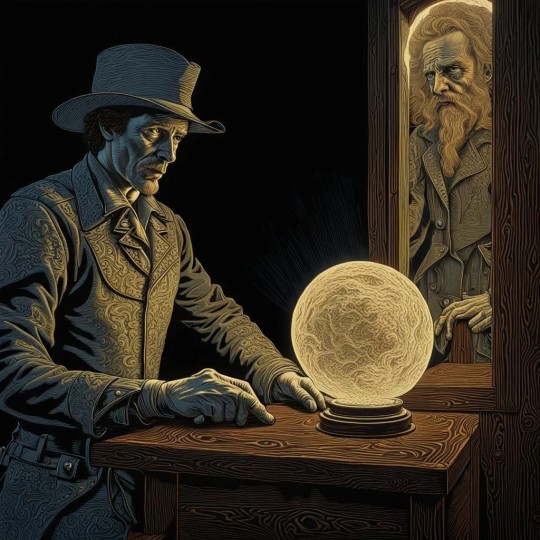
Jules De Grandin Ghost-Breaker
39 notes
·
View notes
Text
Presenting...Pulptober 2023
A few months late, and I’m not quite happy with it, but behold:
1-The Shadow/Master of the Mind
2-Doc Savage/Famous Name
3-The Green Hornet/A Rainbow of Justice
4-The Avenger/With A Little Help From My Friends
5-John Carter/All For Love
6-The Lone Ranger/The Mask Does What The Badge Couldn’t
7-The Spider/Tortured Justice
8-Nita Van Sloan/Remember The Ladies
9-John Blacksad/Heroes Don’t Have To Be Human
10-The Grey Seal/Gone But Not Quite Forgotten
11-Domino Lady/Born From Vengeance, Driven To Justice
12-The Punisher/Veteran Justice
13-Hellboy/Hero With Good Publicity
14-Arsene Lupin/The Lawless Bringing Law
15-Tintin/Humor and Heroism
16-The Blackhawks/Men of War
17-Dejah Thoris/Beauty and Badassery
18-The Rocketeer/Average Joe Justice
19-Ogon Bat/Weird Justice
20-Solomon Kane/Learning A Lesson
21-Conan/Adventures Finds You
22-Sheena/Justice From The Jungle
23-The Question/Find The Truth
24-Shang Chi/Master of the Martial Arts
25-Nycatlope/Better Crimefighting Through Science
26- The Phantom/Justice Never Dies
27-G-8/Brushes With Horror
28-The Green Lama/Where Science and Supernatural Collide
29-Jules De Grandin/Ghost Breaker
30-Athena Voltaire/Throwback Heroes
31-Batman/Gizmos & Gadgets
G-D willing, I will self-Rb tomorrow to make sure everyone gets properly tagged.
#Pulptober#Pulptober 2023#Inktober#Inktober 2023#Pulp Heroes#Batman#athena voltaire#Jules De Grandin#The Green Lama#The Phantom#Nyctalope#Shang Chi#The Question#Sheena#Conan#Solomon Kane#Ogon Bat#The Rocketeer#Dejah Thoris#The Blackhawks#Tintin#Arsene Lupin#Hellboy#The Punisher#Domino Lady#The Grey Seal#Blacksad#Nita Van Sloan#The Spider#The Lone Ranger
43 notes
·
View notes
Text

Virgil Finlay “Jules de Grandin - Occult Detective” preliminary Weird Tales magazine cover (July 1939) Source
Final cover

6 notes
·
View notes
Note
I started reading some of R E Howard’s books because of your blog! They’re lots of fun and I can see so many of the standard fantasy tropes forming. What are some of your favorite covers or illustrations of his work?
My favorite Conan might just be this very off model one, in the Gnome Press editions. At this point, Conan was as completely forgotten as his fellow Weird Tales character, Jules de Grandin, Occult Detective, who was the more popular character at the time. I love it because it's so off-model. Unfortunately, the Gnome Press editions went nowhere, and Conan would not be rediscovered until the paperback boom, where he was kept alive by fantasy superfans like L. Sprague de Camp and Lin Carter.

A friend of mine, and fellow pulp collector, asked me a really interesting question in a late night bull session: what would have happened if Robert E. Howard had lived?
As most pulp aficionados know, Howard was clinically depressed and dedicated his life to taking care of his elderly mother. When he discovered his mother was not going to live through the night, he committed suicide that very night.
We can never really know the answer, but by examining his trajectory and that of his pulp writer contemporaries, we can make a pretty educated guess.
I have some bad news for Sword and Sorcery fans: Howard had completely abandoned the Conan character for months following his death, and indeed, any kind of horror or fantasy fiction, primarily as his relationship with Weird Tales went south. For a while around his death, Howard entirely transitioned to being a Western writer, and in the general opinion of many Howard fans, his most mature and best work were not his sword and sorcery yarns, but the Westerns he wrote at the end of his life like "Vultures of Wahpeton" and "The Last Ride."

In addition, we have an example of what happened to a lot of other writers of Howard's generation, like Hugh B. Cave, another Weird Tales guy, who eventually stopped writing horror and action, and transitioned to being a Caribbean regional writer, or how Manly Wade Wellman wrote about his native Appalachia and North Carolina. Wade Wellman's old 30s characters like John Thunstone and caveman Hok the Mighty were vastly overshadowed by his regional creation of Silver John, the Appalachian balladeer.
It's very easy to imagine a scenario, then, where had Robert E. Howard lived, he became a Texas regional writer mainly known for his Westerns, where he produced his most mature work, and the fact he wrote horror and sword and sorcery is a barely remembered fact only known to the most thorough of academics, who might just chance on the name of a Harold Lamb, Talbot Mundy, and Edgar Rice Burroughs influenced set of yarns starring some guy named Conan.
116 notes
·
View notes
Text

A Retrospective Collection of Classic Occult and Supernatural Detective Stories by Some of the Field’s Greatest and Best-Known Weird Fiction Authors Since the gaslit nights at the end of the nineteenth century, the occult detective has been a beloved and recurring archetype. Mixing the best aspects of the detective tale and weird or supernatural fiction, and capitalizing in part on the massive popularity of Sherlock Holmes, these stories portrayed men and women pitted against surreal and horrifying foes, usually with little to defend them but their own savvy, experience, and know-how. From William Hope Hodgson’s Thomas Carnacki, to Seabury Quinn’s fearless Frenchman Jules de Grandin, to Jessica Salmonson’s Penelope Pettiweather, the occult detective has taken a variety of forms, investigated a wide array of supernatural and otherworldly cases, and entertained generations of readers. This new collection compiles thirty-one all-time classic occult detective stories as it traces the genre’s growth from its nineteenth-century origins to the late twentieth century, showcasing the work of acclaimed pioneers of weird tales alongside cult favorites and exciting modern talents. So, step into the shadows, join us on this journey into the dark, and become a fighter of fear . . .
https://amzn.to/3Y9hddg
2 notes
·
View notes
Text
Cimmerian September #3 - The Tower of the Elephant
The Weird Tales issue for March 1933 hits the readers with yet another installment of Otis Adelbert Kline’s Buccaneers of Venus (that by now has got me curious enough that I’ll probably read it in October), yet another novelette by Seabury Quinn featuring Jules de Grandin, and then two stories by Robert E. Howard and Clark Ashton Smith. As luck would have it, The Tower of the Elephant and The…

View On WordPress
2 notes
·
View notes
Text
The Chapel of Mystic Horror
Step into a world of suspense and supernatural intrigue with “The Chapel of Mystic Horror,” a gripping story by Seabury Quinn. Expertly narrated by the talented Mike Vendetti, this audiobook will transport you to a haunted house filled with dark secrets and ancient evils. Join Dr. Trowbridge and the enigmatic Jules de Grandin as they unravel the mysteries of a Cypriote villa transplanted to…
0 notes
Text
My god Jules De Grandin REALLY does not age well. I know these are a dime pulp pay by the word affair but I’m fairly certain some of this shit was already offensive when it was written. There’s so much to analyze in the failure here and why it feels so exceptionally bad comparatively. Not having much luck on the reparative reading front
0 notes
Note
There are quite a few Victorian occult detectives - Carnacki, Jules de Grandin, Dr Hesselius, Penelope Pettiweather, Westrel Keen etc...
Mike Ashley brought together an anthology of these type of characters called Fighters of Fear - Occult Detective Stories
Is Van Helsing the only classic lit (i.e. public domain) monster hunter? In my current project I ended up making Dracula a work of fiction in-universe which kind of gets rid of anyone from the past who could have written extensively about monsters for my protagonist to learn from their notes (yes an OC is a good solution but I like the idea of making it a sort of passing of the torch), I do know about Baron Vordenburg and Dr Hesselius from Carmilla, and Professor Challenger could also maybe work, but are there any others who fit slightly better as an occult expert who would set out to write his (or her) own encyclopedia of creatures?
Carnaki the Ghost Finder and John Silence, Physician Extraordinary! Consider:
Thomas Carnacki was a consulting detective who frequently investigated occult and supernatural occurences. He lived in a flat on Cheyne Walk in Chelsea, and he kept a library on the occult, which included the Sigsand Manuscript, which helped to protect him against supernatural dangers. He was assisted by a friend named Dodgson. Carnacki faced a variety of supernatural menaces and he categorized spirits as Aeiirii and the more dangerous Saiitii. Along with the Sigsand Manuscript and other occult objects, Carnacki also employed pseudo-scientific items, such as the Electric Pentacle.
And
Dr. John Silence was a medical doctor turned occult detective. Independently wealthy due to his inheritance, he chose to practice medicine on those who could not pay. Once his clinic was up and running, his presence was not always required, so he spent his time investigating psychic and occult mysteries. Dr. Silence was a free-lancer, having no consulting-room, bookkeeper, nor professional manners. He spent five years putting himself through “long and severe training, at once physical, mental and spiritual.” From this, he acquired some abilities of his own, including the ability to protect himself from paranormal attacks. He is more than 40 years old, thin, with brown eyes and a well-trimmed beard. Though regarded as an eccentric, he was confident, with great determination and strength of purpose. He battled astral werewolves, fire elementals, and other fiends.
49 notes
·
View notes
Text
Weird Tales. Notti di Luna Piena
La più popolare serie di racconti horror pubblicata sulla rivista americana Weird Tales, avente a protagonista Jules de Grandin, l’investigatore dell’incubo qui alle prese con nuovi casi soprannaturali…

View On WordPress
0 notes
Photo
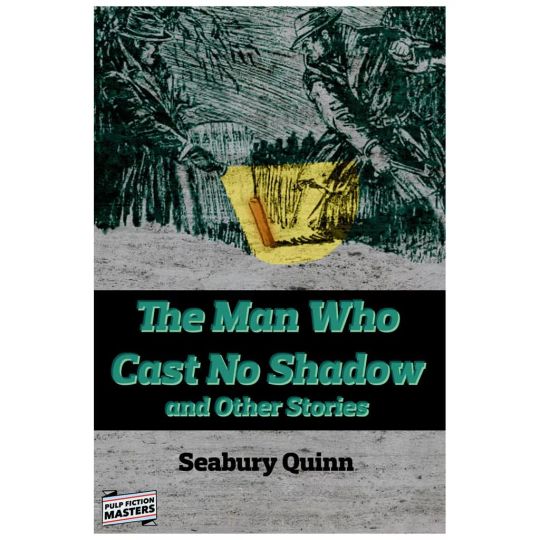
The Man Who Cast No Shadow by Seabury Quinn #OccultDetective Jules de Grandin encounters a #vampire. www.pulpfictionbook.store https://www.instagram.com/p/CoBMXF4rObW/?igshid=NGJjMDIxMWI=
0 notes
Text
Pulptober 2023, Themes Elaborated, Part Six
OK, folks, here it the final installment of the elaborated themes.
As per always, first links!
Part One
Part Two
Part Three
Part Four
Part Five
OK, so here we go!
26- The Phantom/Justice Never Dies. Pulp Heroes are, more or less, ultimately still human beings, and all human beings die. Or do they? Given the age of the genre, it should not be surprising that any number of Pulp Heroes have found ways to cheat death. Time travel, cryogenic freezing, all manner of weird science and weirder magic. And some, of course, just because a man dies, doesn't mean their heroic identity dies with them... Today is for these folks. Alternates: Black Terror*+, Jonah Hex
27-G-8/Brushes With Horror. This one's fairly straightforward. To be a Pulp Hero means having to see things no man should have to see, horrors both man-made or...not. Today is for those heroes defined by this. Alternates: Lobster Johnson, Turok*+
28-The Green Lama/Where Science and Supernatural Collide: Many Pulp Heroes use cutting-edge science and technology to do their thing. Others use magic and mysticism. The heroes featured today? They happily use both. Alternates: The Shadow, The Challengers of the Unknown
29-Jules De Grandin/Ghost Breaker. Another fairly straightforward one. Many Pulp Heroes do battle, not with crime, but with the literal forces of evil; ghosts, vampires, all manner of supernatural threats. Today is for them. Alternates: Carl Kolchak*, John Thunstone
30-Athena Voltaire/Throwback Heroes. Yet another straightforward one. Pulp Heroes created long after the original Pulp Age to evoke those old-time two-fisted tales. Alternates: Red Panda, The Baboon
31-Batman/Gizmos & Gadgets: I don't think I really need to explain this one, do I? Alternates: The Gadget Man, Mexican Fantomas*+
And there you go!
#The Phantom#Black Terror#Jonah Hex#G-*#Lobster Johnson#Turok#The Green Lama#Green Lama#The Shadow#Challengers of the Unknown#The Challengers of the Unknown#Jules De Grandin#Carl Kolchak#Kolchak: The Night Stalker#John Thunstone#Athena Voltaire#Red Panda#The Baboon#Batman#Click Rush#The Gadget Man#Mexican Fantomas#Pulptober#Pulptober 2023#Inktober#Inktobers#Inktober 2023#Pulp Heroes
1 note
·
View note
Photo

Horror on the Links - Jules de Grandin volume 1 Cover by Donato Giancola
5 notes
·
View notes
Text
RIP John Jakes, Pulp and Fantasy Author
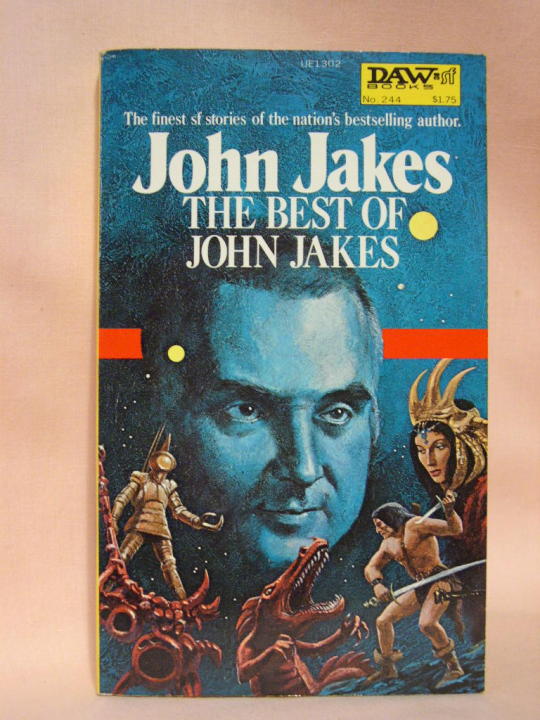
A man who’s career began in pulp scifi, then was one of the greatest group of fantasy fans turned authors, and who finally ended it as one of the most commercially successful “men’s adventure” paperback novels of the 1970s, John Jakes died at 90 last week. What a life! He started his career in scifi pulp of the 1950s, switching to sword and sorcery action in the 60s, and finally, ending the 70s as one of the top selling authors of the decade. In one guy’s life, you can see the ebb and flow of trends in men’s adventure fiction over the decades.

Let’s start the John Jakes story at the end, and then work our way back. Does this book series above look familiar to you at all?
If you have grandparents and they live in America, I 100% guarantee the Kent Family Chronicles (also called the Bicentennial Series) are in your Mee Maw and Pep Pep’s house right now. You probably handled them while visiting their house and went through their bookshelves as a child, right next to their Reader’s Digest condensed books, Tai-Pan and Shogun by James Clavell, copies of the endless sequels to Lonesome Dove, and old TV Guides they still have for some reason next to the backgammon set. If your grandparents are no longer with us, you probably found this series when selling their possessions after death. That’s because these things sold in the millions, back when the surest way to make money in writing was to write melodramatic, intergenerational family sagas of grandiose sweep set around historical events. Weighty family sagas, ones critics call bloated and self important instead of “epic,” were a major part of 70s fiction as they were four quadrant hits: men liked them for war, action, and history (every guy at some point must choose between being a civil war guy, or World War II guy) and ladies loved them for their romance and melodramatic love triangles (after all, the Ur-example of this kind of book is Margaret Mitchell’s Gone With the Wind). This was the kind of thing turned into TV event miniseries, and ably lampooned in the hilarious “Spoils of Babylon” series with Kristen Wiig and Toby McGwire, which, decades after the fact, did to this genre what Airplane! did for the formerly prolific airport disaster movie: it torpedoed it forever by making it impossible to take seriously.

This genre eventually went away because men stopped being reliable book buyers and book readers in the 1990s (or at least, were no longer marketed to as an audience), Lonesome Dove’s insane popularity was the last gasp of this audience. I’ve said this before, but men and boys no longer reading is the single most under remarked on social problem we have. “YA books” now basically mean “Girl Books.”

John Jakes did not suddenly come out of nowhere to write smash hit bestsellers set around a family during the American Revolution. He came from one of the weirdest places imaginable: a crony of L. Sprague de Camp and Lin Carter in fantasy and weird tales fanzines like Amra, he was one of the original “Gang of Eight,” people drawn from fantasy and horror fandom to become pro-writers now that fantasy fiction had a home at Ballantine Publishing, just before the rise of Lord of the Rings and the paperback pulp boom, which is an incredible case of being in the right place at the right time. There, John Jakes, a fanzine contributor and ERB fan, wrote “Brak the Barbarian,” which is amazing as L. Sprague de Camp and Ballantine hadn’t even reprinted the Conan stories yet and Conan was as well known as Jirel of Joiry or Jules de Grandin. Only superfans of pulp knew who that guy was at all, there was no audience for it. He wrote Brak the Barbarian as a superfan, and was lucky the paperback market found him.

The tireless work John Jakes, Lin Carter, L. Sprague de Camp, and the Gang of Eight did in preserving fantasy novelists of the pulp age into the 50s-60s is one of the great historic feats of preservation and keeping fandom flames alive. It’s no exaggeration to say that you know who Conan the Barbarian and HP Lovecraft are right now because of them, fans who kept the flame alive tirelessly and thanklessly in the ultra-rational 50s that had no place for dark horrific fantasy.
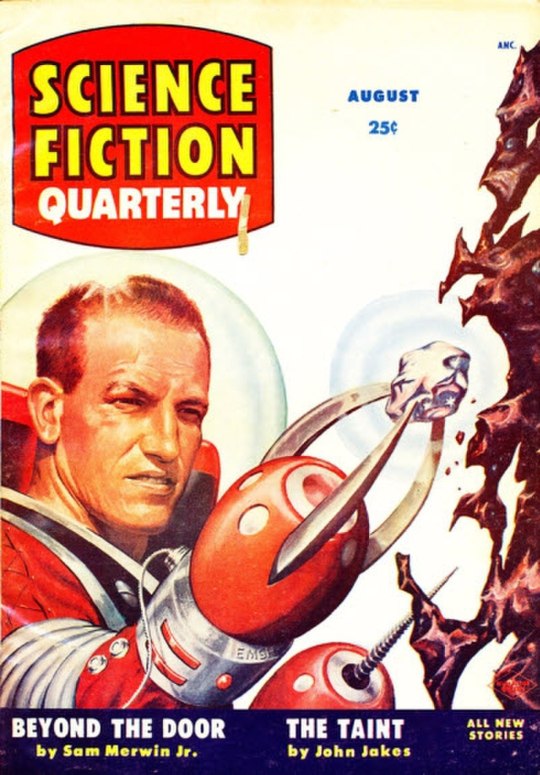
Like his friend in fantasy and pulp fandom, L. Sprague de Camp, John Jakes started as a scifi guy in the endless scifi pulp magazines of the 1950s. Unlike his friend de Camp or Hugh B. Cave, who were full of humor, characterization, and satire, Jakes was often pessimistic, dour, and downbeat, and he disliked to laugh.
It’s shocking to lose someone with a connection to, in one lifetime, the first great group of fantasy fandom, 50s scifi pulp, and 70s men’s adventure. John Jakes’ life spanned all of them.
72 notes
·
View notes